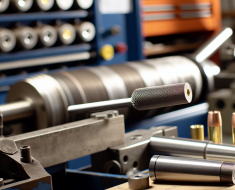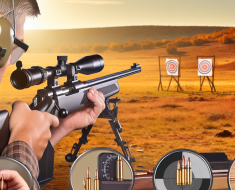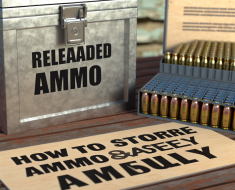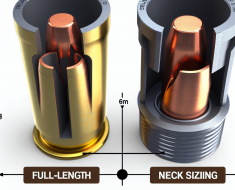Reloading for Hunting: Tips for Durable and Accurate Loads
Reloading ammunition has become a favored practice among many hunting enthusiasts seeking enhanced performance, cost efficiency, and customization. Whether you’re a seasoned hunter or new to the sport, creating your own loads can significantly improve accuracy and ensure reliability under the demanding conditions of the field. However, reloading is both an art and a science—requiring careful attention to detail, quality components, and methodical procedures.
In this article, we’ll explore essential tips for producing durable and accurate hunting loads. From selecting the right components to understanding load development and safety considerations, these insights will help you craft ammunition that performs consistently and withstands the rigors of hunting scenarios.
Understanding the Fundamentals of Reloading for Hunting
Reloading involves assembling individual cartridge components—primers, powder, bullets, and cases—to create functional ammunition tailored to specific firearms and purposes. For hunting, the goals are twofold: achieving pinpoint accuracy to ensure ethical shots and producing loads that can withstand environmental challenges such as moisture, temperature fluctuations, and rough handling.
Before diving into the process, it’s vital to grasp key concepts:
- Component Quality: High-quality brass cases with minimal wear increase durability. Consistent primers and carefully measured powder charges contribute to uniform velocities.
- Load Development: Testing different powder types and bullet weights helps identify the optimal combination for your firearm.
- Safety Margins: Always adhere to published load data from reputable sources like Hodgdon or Sierra to avoid dangerous overpressure situations.
- Environmental Considerations: Hunting often takes place in adverse conditions; selecting corrosion-resistant primers or sealed powders can be beneficial.
A study published by the National Shooting Sports Foundation (NSSF) found that hunters who reload their own ammunition report improved shot placement by an average of 15-20% compared to factory ammo. This improvement is largely attributed to the ability to fine-tune loads specific to their rifles.
Selecting Components for Durable Hunting Loads
The foundation of any successful reload lies in component selection. Here’s how each element contributes to durability and accuracy:
Brass Cases: The Backbone of Reliability
The brass case holds all other components together. For hunting loads where repeated chambering and exposure to elements occur, durable brass is crucial.
- New vs. Once-Fired Cases: New brass offers superior longevity but at a higher cost. Carefully inspected once-fired brass can provide excellent value if free from cracks or splits.
- Brand Selection: Premium brands like Lapua or Hornady are known for uniformity and strength. These qualities help maintain consistent pressures and minimize case deformation.
- Case Preparation: Proper cleaning, resizing, trimming, and primer pocket uniforming extend brass life and improve chamber fit.
Primers: Igniting Consistency
The primer initiates combustion; inconsistent ignition can lead to erratic velocities affecting accuracy.
- Primer Types: For centerfire rifle cartridges commonly used in hunting (e.g., .308 Winchester, .30-06 Springfield), use rifle primers rather than pistol primers due to their higher ignition energy requirements.
- Sealed Primers: Some manufacturers offer sealed primers designed to resist moisture ingress—a useful feature when hunting in wet environments.
- Match-Grade Primers: While more expensive, match-grade primers provide enhanced consistency beneficial for precision hunting loads.
Powder: The Heart of Performance
Selecting the right powder impacts velocity consistency, pressure stability, and barrel life—all critical factors in hunting scenarios.
- Spherical vs. Ball Powder: These powders offer uniform metering but may burn faster than extruded powders suited for magnum cartridges.
- Slow vs. Fast Burning Powders: Slow-burning powders generate more consistent pressure curves in larger cartridges; fast-burning powders suit lighter bullets or smaller cases.
- Mild Loads for Tough Conditions: Reducing velocity slightly can extend barrel life without sacrificing terminal effectiveness—especially important when pursuing game over multiple days or seasons.
Bullets: Balancing Accuracy with Terminal Performance
The bullet must not only hit precisely but also deliver ethical kills through proper expansion or penetration depending on game size.
- Bore Diameter Consistency: Match bullet diameter closely with bore specifications for optimal engagement with rifling grooves—this reduces barrel fouling while enhancing accuracy.
- Bullet Construction: Controlled-expansion bullets such as bonded or partitioned designs perform well on big game by retaining weight after impact.
- Aerodynamics & Ballistics Coefficient (BC): Higher BC bullets maintain velocity better at long range—a significant advantage when shooting across open terrain.
The Science of Load Development: Achieving Accuracy Through Testing
No two rifles shoot identically even with factory ammo—this variability makes load development essential for hunters seeking peak performance. Here’s a systematic approach based on proven methodologies used by competitive shooters and ballisticians







